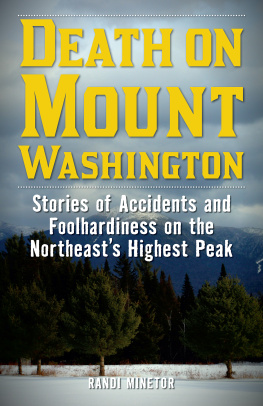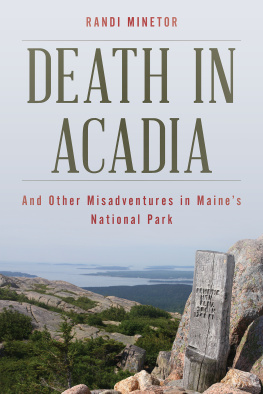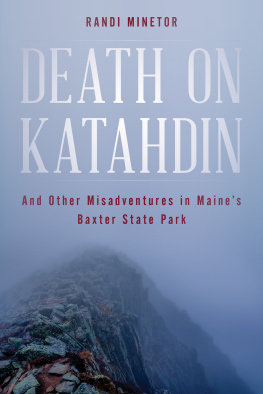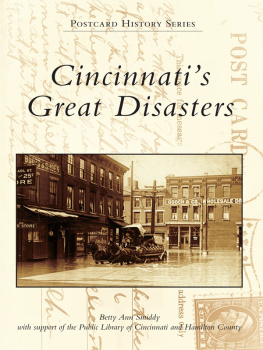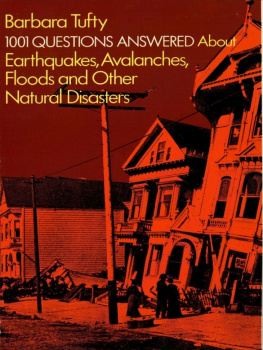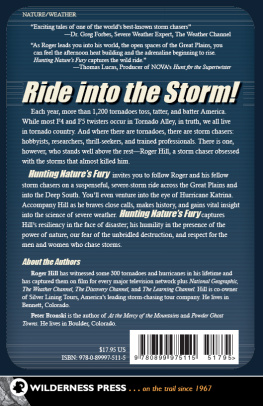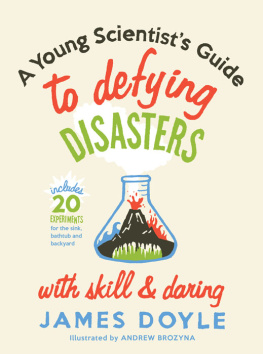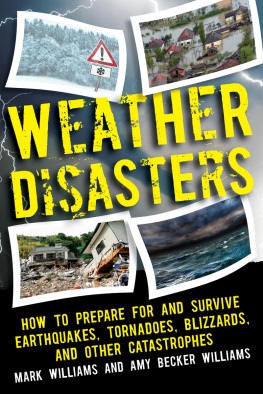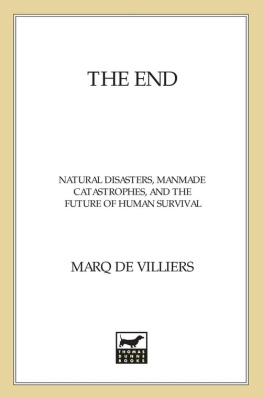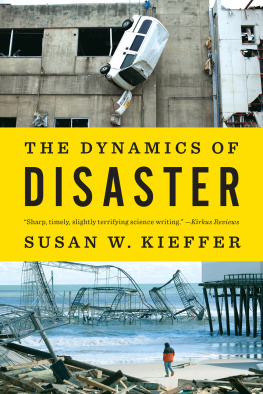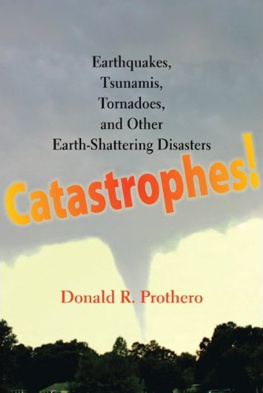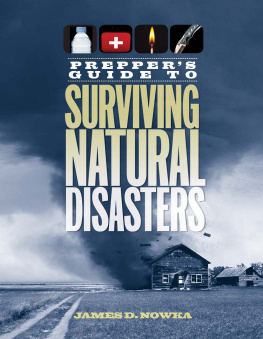H ard as it is to believe in an age of instant answers to every question, people once lived in a time when they could not obtain a scientifically prepared, reasonably accurate weather forecast. Weather predictions did not appear in the mass mediathat is, in newspapersuntil the Smithsonian Institution, the central repository of the nations scientific information, became the nucleus of a new system of weather-information gathering in 1860.
Early that year, the Washington, DC, Evening Star suggested to its readers that just looking at the sky could indicate weather. The colors of the sky at particular times afford wonderfully good guidance, it noted. Not only does a rosy sunset presage fair weather, and a ruddy sunrise bad weather, but there are other tints which speak with equal clearness and accuracy. A bright yellow sky in the evening indicates wind; a pale yellow, wet; a neutral grey color constitutes a favorable sign in the evening, an unfavorable one in the morning.... These are simple maxims; and yet not so simple but that the English Board of Trade has thought fit to publish them for the use of seafaring men.
Remarkably, just twenty days earlier on January 6, 1860, the Evening Star published its first real weather reportin fact, the first one in American history. It carried the observations made across the country and transmitted over the American Consolidated Telegraph Line, which led to a bank of learned men within the Smithsonian. Stations from New York City in the north to New Orleans, Louisiana, in the south and west provided their weather observations in the simplest terms: clear, cold, noted New York, while Norfolk, Virginia, added the temperature (16 degrees, presumably Fahrenheit) and the wind direction (NW). The information from the twenty-eight reporting weather stations allowed Smithsonian scientists to begin to understand weather patterns, peeling away the first layer of mystery and creating a new science of meteorology.
Barely a year later, the Civil War ended communication with the southern states and curtailed the growth of the new weather network, but the foundation of weather forecasting had been laid, and science would push forward once again later in the century when connections could be reestablished.
These firsts in weather observation and prediction came more than two centuries too late for the earliest European settlers in New Englands colonies, however. For residents of Jamestown, Virginia, and Plimouth Plantation in what would become Massachusetts, the brewing of a major storm might only become apparent when the wind began to pick up speed and force as it reached the coastline, either moving in from the east over the Atlantic Ocean, or from the west or north over the vast forests. When the wind is out of the East, tis never good for man nor beast, an old proverb warned, and the violent gales that often followed made good on the sayings promise.
How did these colonists of the 1600s determine if they were in the path of a storm at any time of year? Nearly one hundred years before the invention of the thermometer and at least a decade before the first barometer measured changes in atmospheric pressure, they had to rely on their eyes, ears, and the knowledgemore to the point, superstitionspassed down by their elders.
Perhaps they observed their cattle gaining heavy wooly coats as the warm summer days ended and the trees near Plimouth Plantation began turning auburn and scarlet. Cows and sheep with thicker than normal coatsa subjective judgment in the best of timesmight indicate a particularly cold and snowy winter on its way, as good a sign as any that the colonists needed to chop extra firewood and seal the cracks in their homes against freezing temperatures. As a storm approached, cattle may have bunched together in a corner of a pen or farmyard, a defensive posture against wind and rain that may have served as a warning to their human caretakers.
In this Currier & Ives representation, the Pilgrims landed at what would become Plymouth Colony. (Courtesy Library of Congress)
If the rabbits and squirrels in the nearby forests looked especially fat, they might be taking on extra insulation for an unusually frigid season as well. Perhaps settlers busy with housekeeping tasks noted more mice than usual attempting to make themselves at home inside their human neighbors buildings, or spiders constructing uncommonly large webs to catch extra food. Moles digging particularly deep holesreported as more than 2.5 feetmay have indicated that they felt a very cold season coming on. Any of these signs might have made colonists believe that storms or blizzards approached, even if the animals appeared to sense events that were still several months off.
Members of the new colonies may have seen the change of seasons enough times during their early years in Plimouth to note when trees that bore fruit or nuts produced particularly abundant crops, providing the additional food animals needed for a harsher than normal winter ahead. Even before the season changed, colonists may have looked at the moon as it rose in the night sky and noted a ring around it, the most dependable warning that rain or snow would arrive in a day or so.
All these signs might mean nothing at all, of course, but these were the best means the colonists had of guessing what kind of weather might be on its way in the near term. Amid these old wives tales and suppositions, one sign actually provided real evidence: an eastern sky glowing red in the early morning. Colonist William Bradford and other seasoned sailors knew exactly what this foretold: the sun dyeing heavy, wet clouds in shades of salmon and coral, a sure indication of a storm crossing the ocean on its way to the colony.
Bradford did history the courtesy of writing a careful record of Plimouths early days, providing us with the only evidence of a massive storm that rocked the colony in 1635. This year, y 14. or 15. of August [being Saturday] was such a mighty storme of wind & raine, as none living in thee parts, either English or Indeans, ever saw, he wrote. Being like [for y time it continued] to those Hauricanes and Tuffons that writers make mention of in y Indeas. It began in y morning, a litle before day, and grue not by degrees, but came with violence in y begining, to y great amasemente of many.
Bradfords archaic language and abysmal spelling notwithstanding, the gale certainly seemed cataclysmic to the colonists, blowing down a total of 211 houses and tearing the roofs off others. He reported that the storm caused a number of ships to be lost at sea and placed others in extreme danger, swelling the seas waves to twenty feet right up & downe in height. Native tribesmen and their families climbed trees to escape the waves, but this may have been exactly the wrong strategy. The winds caused many hundered thowsands of trees to topple, the largest of them yanked out of the ground by their roots and the tops of the tallest pine trees seared off. Bradford saw tall yonge oaks & walnut trees... wound like a withe, twisted by the wind and very strang & fearfull to behould.
The terrible storm continued for five or six hours, Bradford said, coming at the colony from the southeast and splitting itself into several parts, finally abating and making its way back to the south and east. The signes and marks of it will remaine this 100. years in these parts wher it was sorest, he completed his account. In a last note, he added, The moons suffered a great eclips the 2. night after it.
Further descriptions come from the journal of John Winthrop, then governor of the Massachusetts Bay Colony. The wind having blown hard at S. and S.W. a week before, about midnight it came up at N.E. and blew with such violence, with abundance of rain, that it blew down many hundreds of trees, near the towns, overthrew some houses [and] drave the ships from their anchors, he wrote. He made special note of a ship called the


